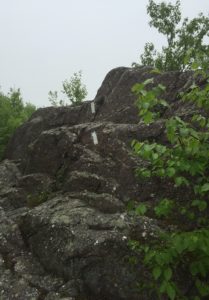
When I hiked the Appalachian Trail five years ago I kept a sharp eye out for white blazes, the trail markers hikers follow from Georgia to Maine. They were usually painted on trees or, sometimes, fence posts. Pretty often, on boulders.
Almost all of the trail is in the woods, in the Appalachian mountains. That why it’s sometimes called the “green tunnel.” But the blazes, thousands of them, are not the only signs out there the woods.
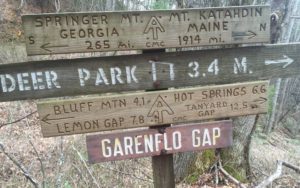
There are signs identifying shelters and roads, signs telling you how far you’ve come — and how far it is to the next shelter. Or, sometimes, how far it is to Mount Katahdin, the end of the trail in Maine.
Believe it or not, there are a few grave markers close by the trail — in the middle of nowhere. Two graves were for soldiers from the North Carolina mountains who fought for the North during the Civil War. They were ambushed when they came home on leave.
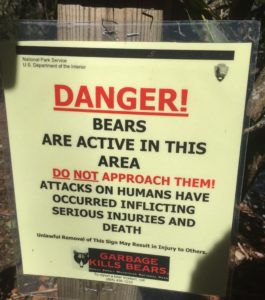
There are also signs warning hikers about rowdy bears and washed out bridges. The bridge signs were helpful but I didn’t need a sign telling me to give bears a wide berth.
Occasionally there are weather signs, like the one beside the trail just before you begin climbing New Hampshire’s Mount Washington, the highest peak in Northeastern United States at 6,288 feet.
Mount Washington has some truly awful weather.
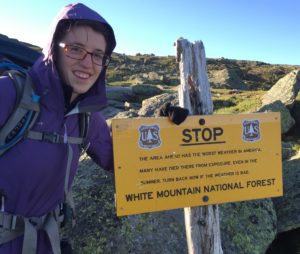
The sign says: “STOP The area ahead has the worst weather in America. Many have died there from exposure., even in the summer. Turn back now if the weather is bad.” Temper and I were lucky. We climbed Mount Washington on a beautiful day.
Until mid-1990’s it held the record for the fastest wind gust ever recorded on the surface of the Earth — 231 mph. It’s also one of the coldest places on Earth, with wind chills that have approached 100 degrees Fahrenheit below zero.
The Mount Washington sign isn’t hype — there have been a total of 161 fatalities on that mountain since 1849, according to NH Magazine, about half the number who have died trying to climb Mount Everest.
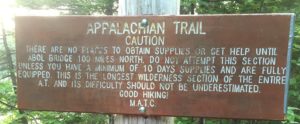
But some signs, one in particular at the entrance to what they call the “100 mile wilderness” in Maine, greatly overstate the difficulties ahead.
The sign says: “CAUTION There are no places to obtain supplies or get help until Abol Bridge 100 miles north. Do not attempt this section unless you have a minimum of 10 days supplies and are fully equipped. This is the longest wilderness section of the entire A.T. and its difficulty should not be underestimated. Good Hiking!”
I hiked the “100 mile wilderness” in five days, when I was 73.
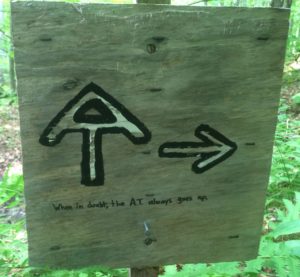
I’ve forgotten where I saw, and photographed, my favorite sign of the whole trip. But ask any thru-hiker, it’s truth is universal and it would be right at home anywhere on the trail.
The A.T. intersects hundreds of other trails and most of those intersections are well marked. But not all, far from it. Sometimes it take a while to figure out which way to go. This sign offered helpful advice. It says, “When in doubt, the A.T. always goes up.”
Truer words were never spoken.